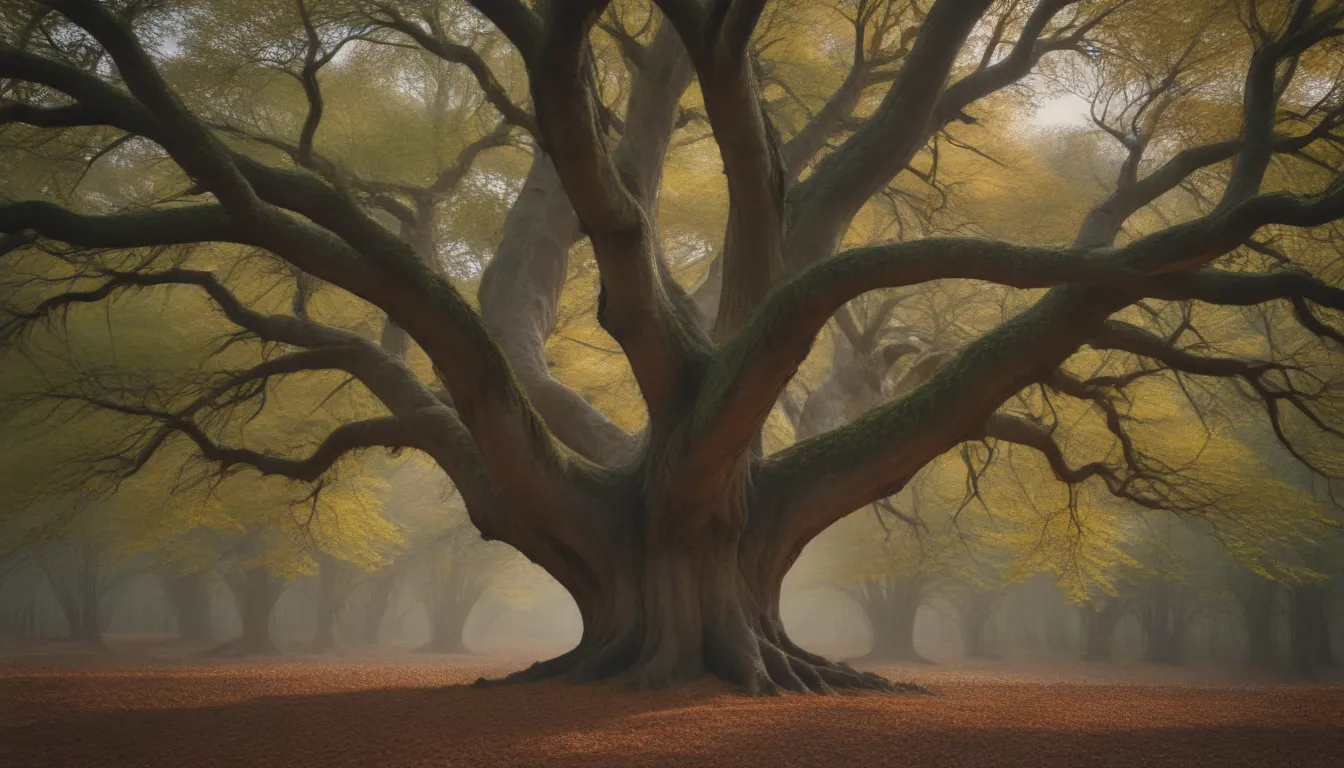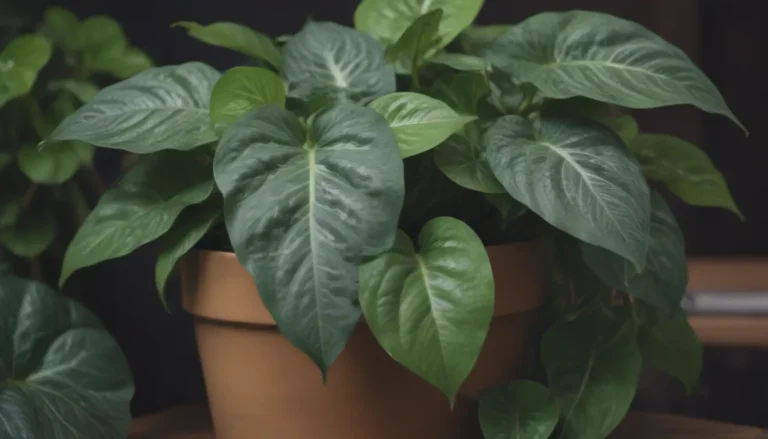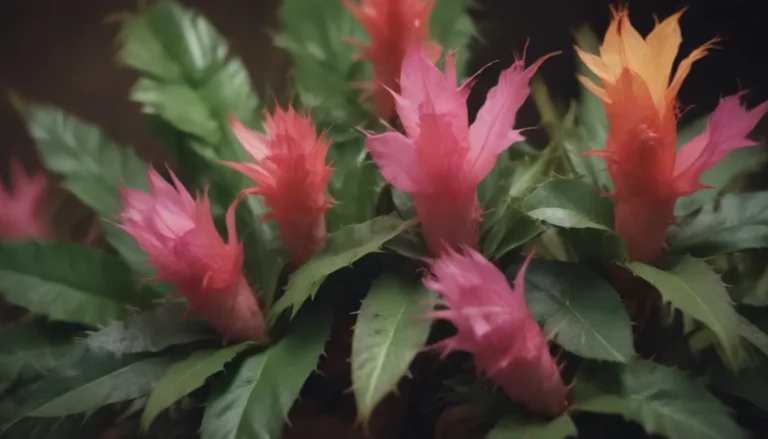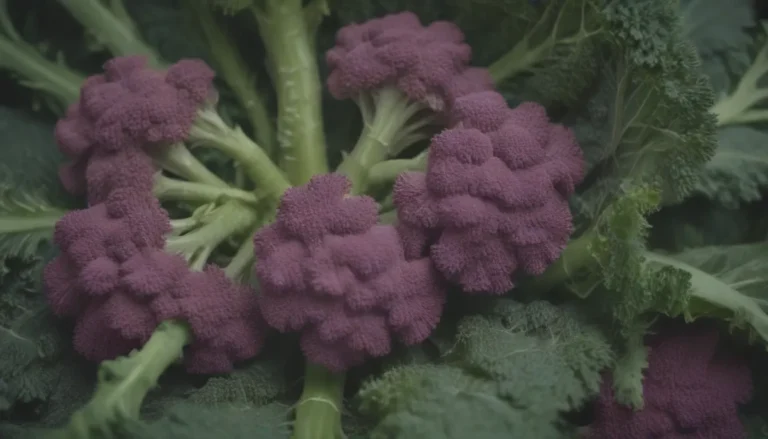The Diverse World of Beech Trees: A Detailed Guide

If you’re a fan of trees, you’ve probably heard about beech trees. These deciduous plants, belonging to the Fagus genus in the Fagaceae family, are a common sight in the eastern United States and southeastern Canada. Known for their narrow but dense foliage crown, beech trees are popular choices for residential shade trees. But did you know that there are roughly a dozen different types of beech trees out there? In this comprehensive guide, we’ll explore the 10 most common varieties of beech trees and provide you with valuable information on their characteristics, growing requirements, and more.
Dive into the World of Beech Trees
Beech trees are long-lived specimens that can thrive for 200 to 300 years. Slow-growing at a rate of 12 to 24 inches per year, these majestic trees can reach mature heights ranging from 30 to 150 feet, depending on the species. Their leaves are typically green and may have toothed edges, but some cultivars offer variegated, yellow, or even purple leaves. Let’s take a closer look at the key characteristics of beech trees:
- Bark: The bark of beech trees varies in color and texture, adding to their aesthetic appeal.
- Leaves: Beech tree leaves are usually green and may feature toothed edges. Some cultivars offer variegated or colorful foliage.
- Fruit: Beech trees produce nuts that are edible for humans and wildlife, but caution is advised as they can be mildly toxic in large quantities.
- Seeds: The nuts of beech trees are enclosed in cupules, adding a unique feature to these trees.
- Flowers: Beech trees produce inconspicuous flowers that give way to the nuts or seeds.
Warning
While the nuts of beech trees are edible, consuming them in large quantities can be harmful due to the presence of tannins.
Explore the Common Varieties of Beech Trees
- American Beech (Fagus grandifolia)
- Native Area: Eastern United States
- USDA Growing Zones:
- Height: Up to 150 feet
- Sun Exposure: Full sun
- Soil Type:
-
Description: The American Beech is the only native beech species in North America. Featuring elliptical leaves and a dense crown, this tree is a popular choice for shade. It is susceptible to beech blight aphid and beech bark disease, but is otherwise low-maintenance.
-
European Beech (Fagus sylvatica)
- Native Area: Europe
- USDA Growing Zones:
- Height: Up to 150 feet
- Sun Exposure: Full sun to partial shade
- Soil Type:
-
Description: The European Beech is a widespread species known for its dark gray bark and oval, dark green leaves. It offers various cultivars with different growth forms and leaf colors, making it a versatile choice for landscapes.
-
Copper Beech (Fagus sylvatica ‘Purpurea’)
- Native Area: Europe
- USDA Growing Zones:
- Height: Up to 120 feet
- Sun Exposure: Full sun to partial shade
- Soil Type:
-
Description: The Copper Beech, known for its coppery-purple leaves, is a striking variety of the European Beech. It offers unique coloration and can be grown as a hedge plant due to its slow growth rate.
-
Tri-Color Beech (Fagus sylvatica ‘Purpurea Tricolor’)
- Native Area: Europe
- USDA Growing Zones:
- Height: Up to 50 feet
- Sun Exposure: Full sun to partial shade
- Soil Type:
-
Description: The Tri-Color Beech features variegated leaves in pink, white, and green hues. With a manageable size, this cultivar is ideal for smaller yards and offers a unique color display throughout the seasons.
-
Japanese Beech (Fagus crenata)
- Native Area: Japan
- USDA Growing Zones:
- Height: Up to 200 feet
- Sun Exposure: Full sun to partial shade
- Soil Type:
-
Description: The Japanese Beech, also known as Buna or Siebold’s beech, is a versatile species with glossy green leaves and a rounded crown. It produces dense shade, making it a challenging environment for other plants to thrive.
-
Oriental Beech (Fagus orientalis)
- Native Area: Eastern Europe and Western Asia
- USDA Growing Zones:
- Height: Up to 150 feet
- Sun Exposure: Full sun to partial shade
- Soil Type:
-
Description: The Oriental Beech closely resembles the European Beech but can reach greater heights. With long, slender buds and pale yellow foliage in fall, this tree adds a touch of elegance to any landscape.
-
Japanese Blue Beech (Fagus japonica)
- Native Area: Japan
- USDA Growing Zones:
- Height: Up to 80 feet
- Sun Exposure: Full sun
- Soil Type:
-
Description: The Japanese Blue Beech is known for its vibrant green foliage and multi-trunk silhouette. With a striking appearance and classic pointed leaves, this species adds a touch of sophistication to any woodland.
-
Chinese Beech (Fagus engleriana)
- Native Area: China
- USDA Growing Zones:
- Height: Up to 70 feet
- Sun Exposure: Full sun to partial shade
- Soil Type:
-
Description: The Chinese Beech stands out with its vibrant yellow leaves and oval-shaped foliage. Resilient to wind and frost, this tree offers a pop of color to any landscape.
-
Mexican Beech (Fagus mexicana)
- Native Area: Mexico
- USDA Growing Zones:
- Height: Up to 130 feet
- Sun Exposure: Full sun to partial shade
- Soil Type:
-
Description: The Mexican Beech is a towering species found in the mountainous regions of Mexico. With simple, pointed leaves and a majestic stature, this tree commands attention in any setting.
-
Taiwan Beech (Fagus hayatae)
- Native Area: Taiwan
- USDA Growing Zones:
- Height: Up to 50 feet
- Sun Exposure: Full sun to partial shade
- Soil Type:
- Description: The Taiwan Beech, an endangered species, is a medium-sized tree found in the ridge-top forests of Taiwan. Its conservation status highlights the importance of protecting these unique trees.
Tips for Growing Beech Trees Successfully
Beech trees can be a wonderful addition to any landscape, providing ample shade and visual interest. While they may be slow growers, their longevity and beauty make them worth the wait. Here are some tips to help you grow and care for your beech trees:
- Where to plant: Choose a spot with full sun exposure and ample space for the tree to spread out.
- When to plant: Plant beech trees in the spring or fall for optimal growth.
- How to plant: Dig a hole twice the width of the root ball and ensure the tree is planted at the same depth as it was in the nursery container.
- Light requirements: Beech trees prefer full sun but can tolerate partial shade.
- Watering needs: Keep the soil consistently moist, especially during the tree’s early years.
- Soil type: Beech trees thrive in well-drained, loamy soils with a slightly acidic pH.
Tip
If you’re interested in trees similar to beech, consider exploring oak trees such as the English oak or turkey oak. These trees offer similar benefits and can complement the beauty of beech trees in your landscape.
In conclusion, beech trees are a diverse and fascinating group of plants that can enhance any outdoor space. With their striking appearance, long lifespan, and valuable wood, beech trees have much to offer. By selecting the right variety and providing proper care, you can enjoy the beauty and benefits of these majestic trees for years to come.
References:
– Copper Beech. Yale University.
– American Beech: Native American Use. The Center for Teaching and Learning at the University of Vermont.
– American Beech. USDA Forest Service Southern Research Station.
– Beech Bark Disease. U.S. Forest Service Research & Development.
– Beech Blight Aphid. University of Massachusetts Extension Landscape, Nursery and Urban Forestry Program.




